Don't wanna be here? Send us removal request.
Text
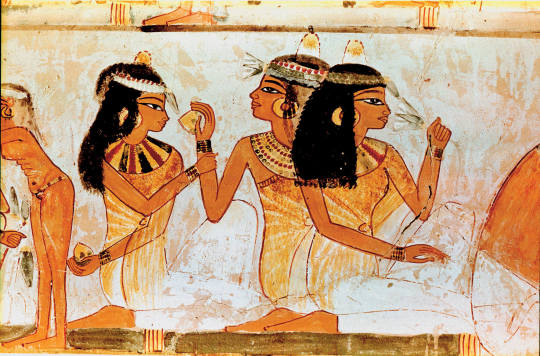
A guest smells the lotus flower while the others pass along the fruit in a banquet scene.
New Kingdom, 18th dynasty, c. 1421-1372 B.C. Tomb of Nakht (TT52), Sheikh Abd el-Qurna, Thebes.
266 notes
·
View notes
Text

Dua Djehuty on his day!
Dua to you oh great ibis who won moonlight from Khonsu!
151 notes
·
View notes
Text
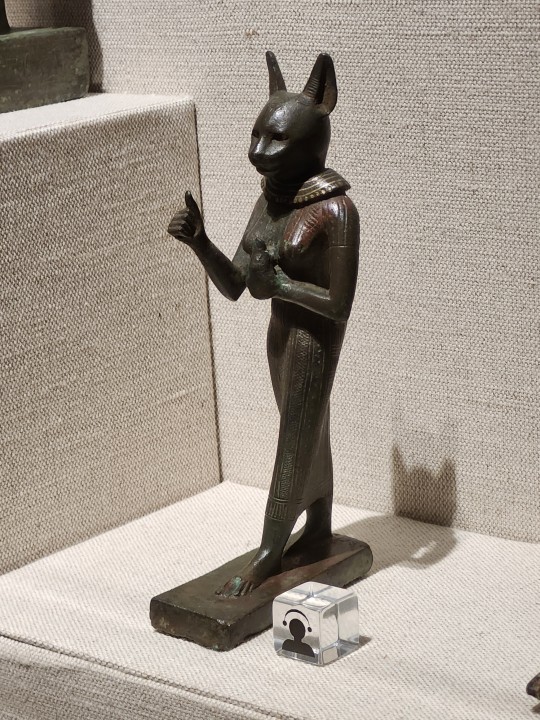
If you are having a bad day here is a picture of Bastet, the goddess of joy, pleasure, and warfare giving a thumbs up.
716 notes
·
View notes
Text

Ra, in the form of a falcon, hanging out in the Underworld (Duat).
388 notes
·
View notes
Text
Tumba Ramsés V y Ramsés VI (Dinastía XX) Valle de los Reyes. Egipto
4K notes
·
View notes
Text
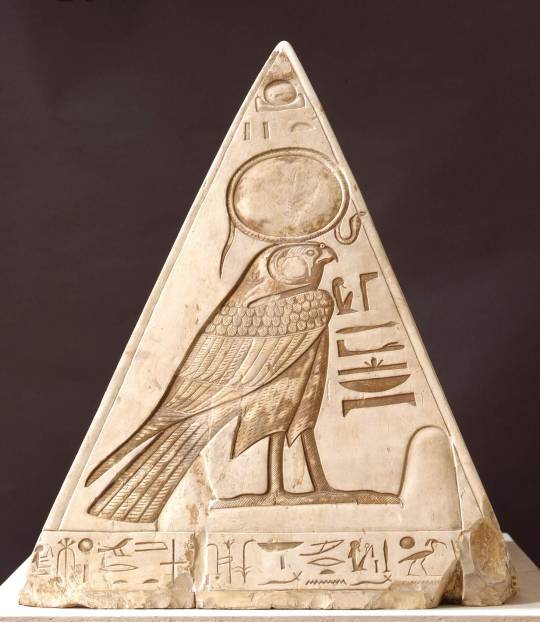
Pyramidion of Ramose
The limestone Pyramidion of Ramose, from the top of the tomb of the ‘Necropolis Scribe’. Scenes on all four sides depict the worship of the sun. Ramose of the 19th dynasty was an ancient Egyptian noble and high-ranking official during the reign of kings Seti I and Ramesses II.
Ramose served as a vizier, which was a prestigious administrative position in ancient Egypt. He is known for his tomb, which contains detailed reliefs depicting scenes from his life and various aspects of ancient Egyptian culture.
New Kingdom, 19th Dynasty, ca. 1292-1189 BC. From Tomb of Ramose (TT7), Deir el Medina, Thebes. Now in the Egyptian Museum of Turin. C. 1603
Read more
97 notes
·
View notes
Text

You could say that the never ending battle between good and evil is a real pain in the eye!
𓂀
22 notes
·
View notes
Text
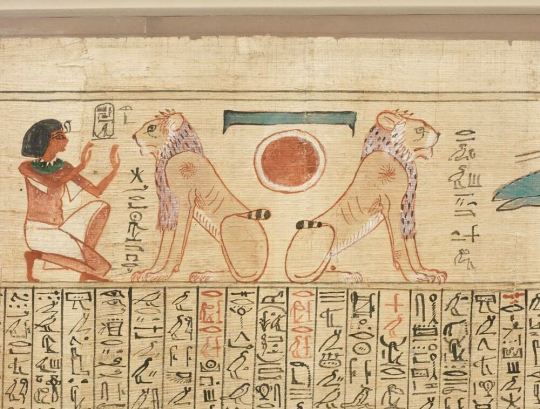
King Herihor before the Two lions of the Aker deity, representing “Today” and “Tomorrow”. A personification of the horizon, Aker was a deity of the Earth and Underworld, believed to guard both the eastern and western horizons (Bakhu and Manu).
Book of the Dead of Nodjmet Third Intermediate Period, 21st Dynasty, ca. 1069-945 BC. Now in the British Museum. EA10541
Read more
208 notes
·
View notes
Text
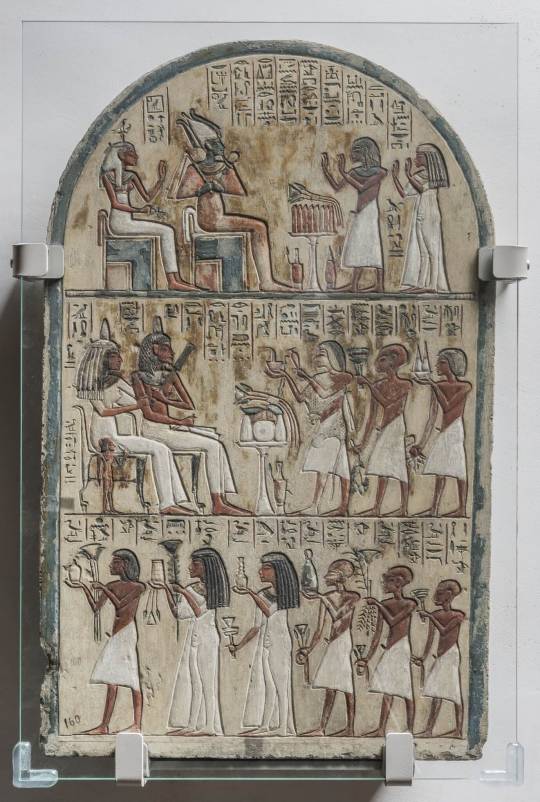
Stele of Maya
In the upper portion, Maya and his wife Tamit pay homage to Osiris and Hathor, the gods of the necropolis.
In the lower register is a similar, corresponding scene in which Maya and his wife receive food offerings, in their turn, from their many children, in keeping with a principle of reciprocity that is often found in Egyptian religious thought.
The funerary stele of Maya, the “scribe off the outlines”, arrived in Turin with the Drovetti collection in 1824. It was possibly discovered near the funerary chapel where Ernesto Schiaparelli was to excavate roughly 80 years later.
New Kingdom, late 18th Dynasty, ca. 1353-1292 BC. Tomb Chapel of Maya (TT338), Deir el-Medina, Thebes. Now in the Egyptian Museum of Turin. S. 7910
575 notes
·
View notes
Photo
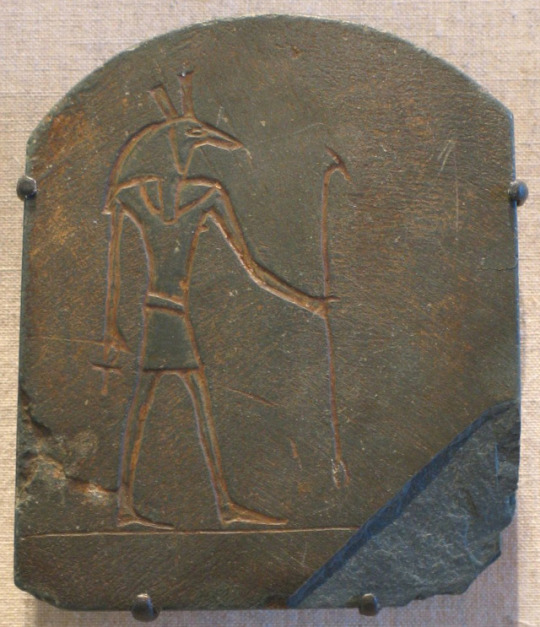
This stela at the Brooklyn Museum seems curiously unfinished; you’d expect an image of the person dedicating it, and some hieroglyphs as well. It’s made of slate, which I think is also a bit unusual. Probably dating to the Late Period or the Ptolemaic era, the stela depicts Set all by his lonesome.
164 notes
·
View notes
Text
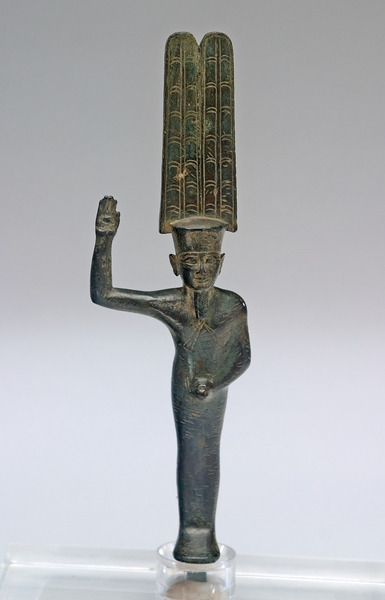
Min of Coptos, God of Fruitfulness and Increase
While posture was always formal and stiff, faces, which were rarely individualized, exhibited serenity and calm. These characteristics constituted an aesthetic ideal for 3,000 years. Min, god of fertility and sexuality, was sometimes depicted wearing a crown made of feathers and holding a flail.
Late Period, ca. 688-399 BC. Now in Lowe Art Museum, Miami. 57.141.000
114 notes
·
View notes
Text
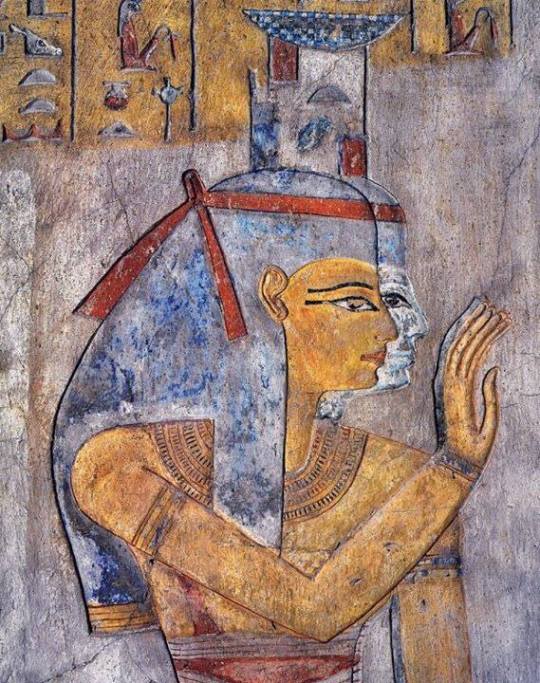
Isis and Nephthys
Joint Tomb of Twosret and Setnakhte (KV14), Valley of the Kings, Thebes.
93 notes
·
View notes











